Africa Drawing Someone on a Camel Easy
I introduced the village of Fana in my previous post. This is part II.
Sitting under a tree. A breeze laced with mid-day Sahelian heat. Drinking a sachet of bissap juice, partially frozen, with bite sized sugary ice floes. From a cell phone speaker, Oumou Sangare, singing about her beloved. Sitting, talking, laughing. Laughing because a chicken is chasing a piglet.
Sitting under a tree. Ignorant of the hour. Unconcerned about what's next.
This is the joy of simplicity.
Malian musician Habib Koite used that expression – the "joy of simplicity" – in a recent interview. It's a good way to describe my time in Fana.
You may be thinking, what could be simple about teaching 25,000 people how to draw camels? As it turns out, that task was surprisingly straightforward.
Morning in Fana. I wake up and bathe. Bucket of water, soap, a rock, four walls, no roof. Most Malians bathe several times a day, but the first washing of the day is the most important. Before greeting anyone, you need to make sure you are clean.
Greetings:
Person 1: I ni sogoma (literally you and the morning).
Person 2: N ba (males respond with "my mother," literally thanks to my mother I am here to receive your greeting) or N se (females respond with "my power," literally "my power as a female always wins against time"). I ni sogoma.
Person 1: N ba/N se. Somɔgɔw bε di? (how is the family, literally how are the people of the house?)
Person 1: tɔɔrɔ si tε (no trouble at all). Hεrε sira? (how did you pass the night, literally did you pass the night in peace?)
Person 2: Hεrε doron (peace only)
Person 1: N ba/N se
The greetings don't have to end there. I could ask "i cε ka kene?" (how is the health of your husband) or "i balimamuso ka kene?" (how is the health of your sister), and so on.
After greeting everyone in the house, we leave to greet the neighbors.
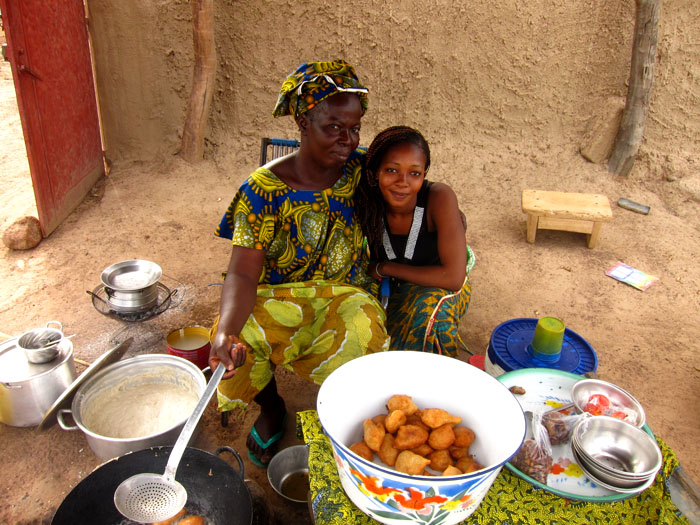
Bintou with a woman selling fried balls of pounded millet. We eat them with a salty broth. Breakfast.
After breakfast, the women and one man prepare lunch. The one man is Bintou's older brother. He contributes by killing a chicken. Then he goes back to the family boutique, which is located across from the family compound, and resumes filling plastic bags with granulated sugar, which will be sold for 10 cents each.
Making lunch takes several hours. Many African dishes involve stews and sauces that are slow cooked. In this case, a chicken also had to to be prepared.
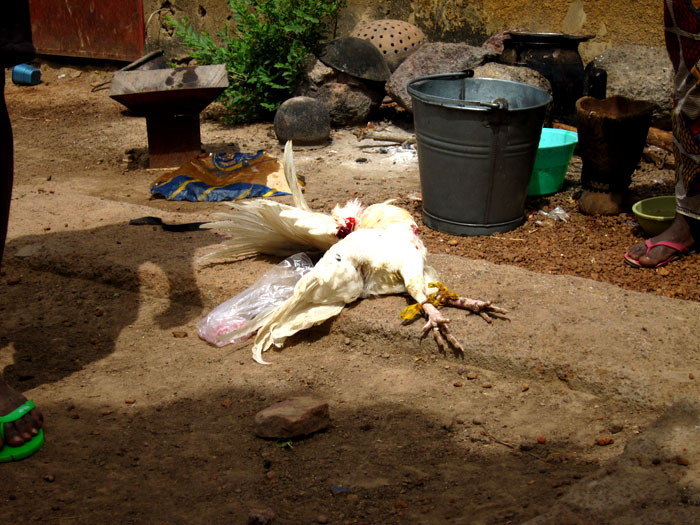
Poulet
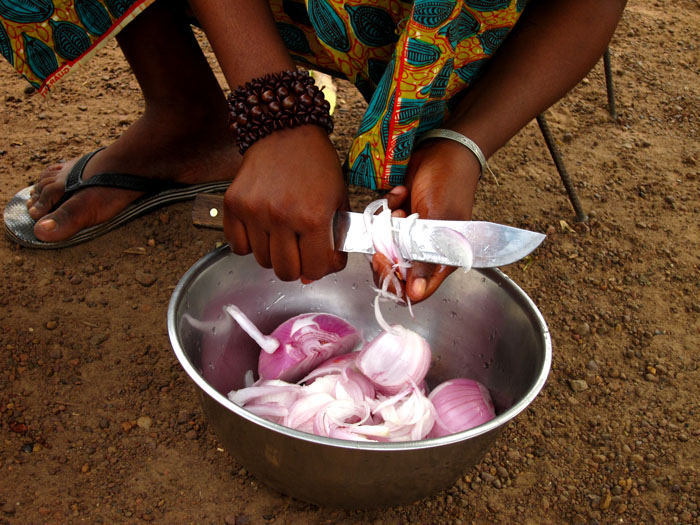
The two photos above contain the ingredients for Yassa if you subtract the plastic bag and add chili, lemon, a bit of mustard and maggi, the all purpose bouillon cube found throughout West Africa.
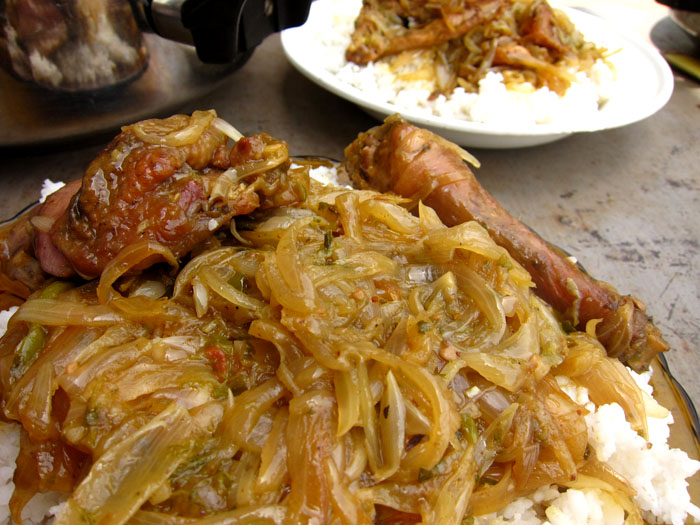
The finished product. Sauce onion, also known as Yassa. Serve with rice. I can eat plates of it.
After lunch, sit at the boutique. Or under a tree. Or on my bed:
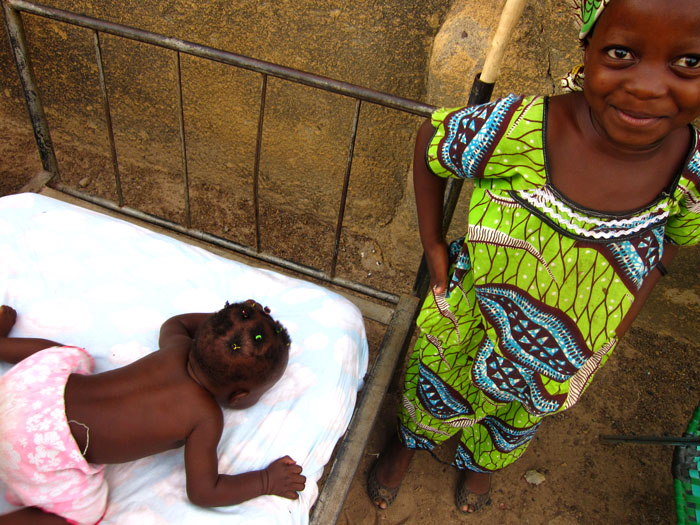
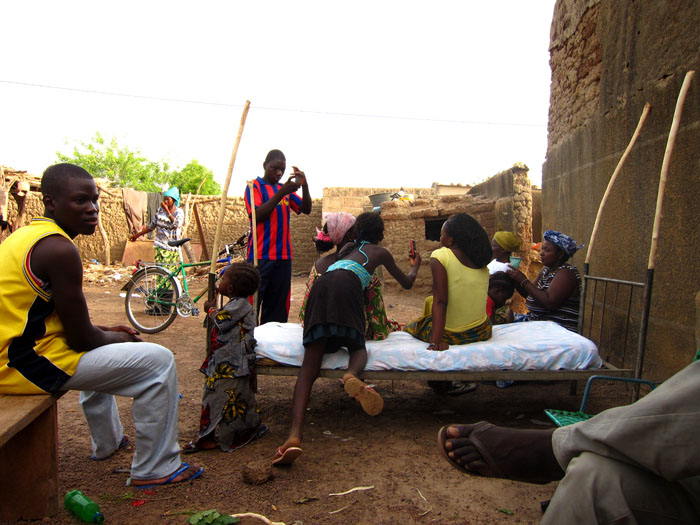
Taking pictures with cellphones before we watch a telenovela.
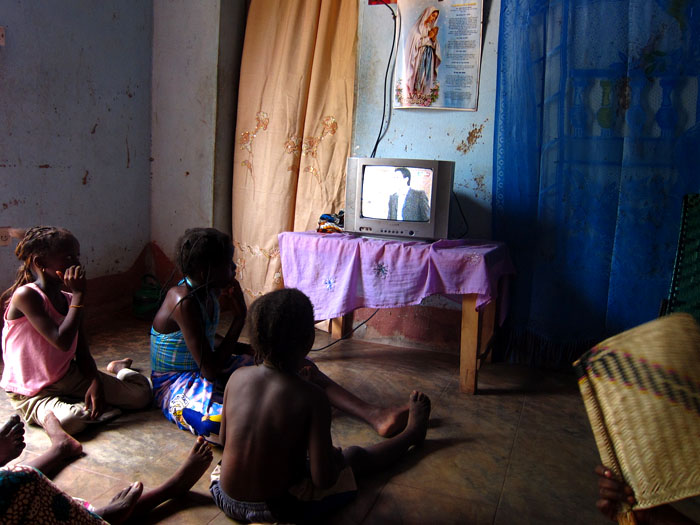
Telenovelas (soap operas from Latin America) are a fixture of TV stations across West Africa. A Malian family watches an imaginary Latin American family gossip and feud for a half hour. While there is much to lament here, telenovelas, dubbed into French, are also a language learning tool.
Globalization is an interesting topic in the context of Fana. Six years ago, Fana hosted the Forum des Peuples, a gathering of alter-globalists. Alter-globalists believe that globalization is not inherently bad, but that drastic improvements need to be made in the areas of trade equality, human rights, environment, and cultural integrity. I'm on board.
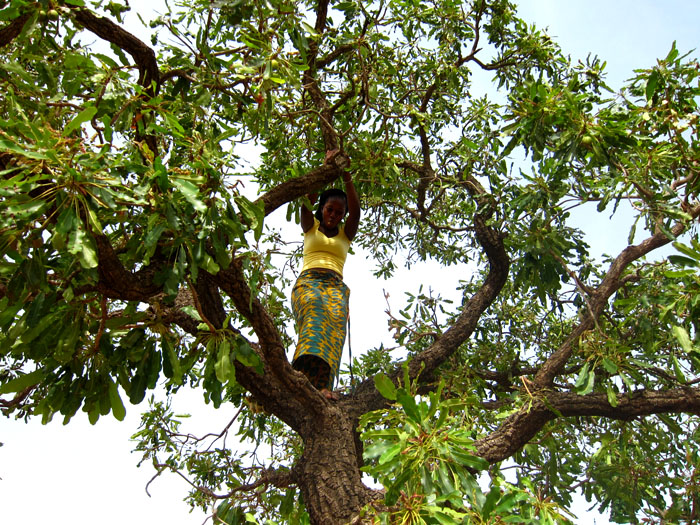
Later, my girlfriend is in a tree. She is in pursuit of a tiny green fruit that tastes like a sweet avocado.

At the top of the tree. With her pagne and yellow top, she is a chameleon.
Notice the small green fruit all over the ground. I forget the name..
Then, camel drawing.
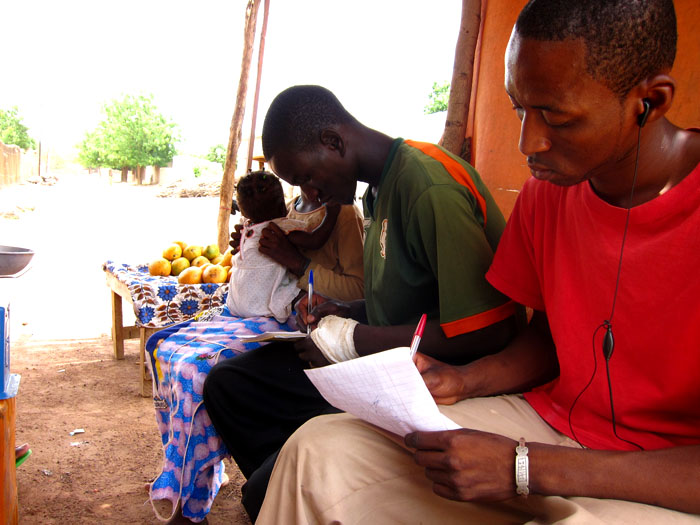
A few of my disciples, hard at work. In my h2dc post on remedial camel drawing I explained that when someone first learns how to draw camels it is similar to a blind person using their vision for the first time. And so it was for Ibrahim and Boubacar.
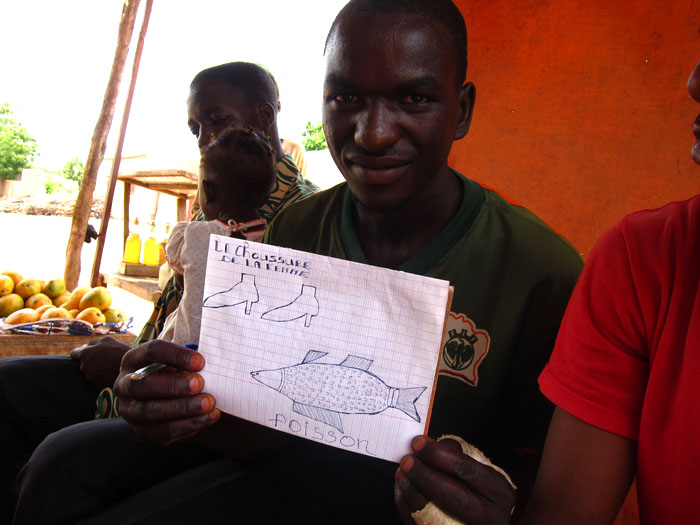
With renewed self-confidence in their artistic abilities, camel drawing turned into ladies'-shoes-and-fish drawing.
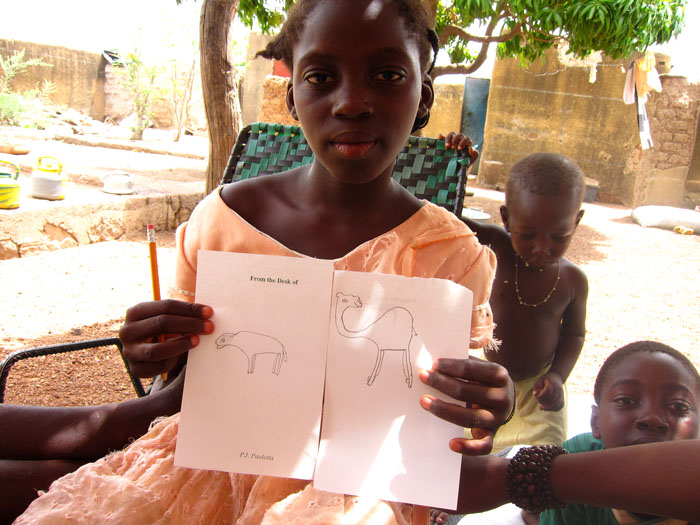
Lakaré is the reason 25,000 people will be able to draw camels. On the left: her camel before my training program. On the right: after. When she finished her first camel, she was on the floor laughing. Then she drew a second camel, then a third, and a fourth, until she filled up a legal pad with camels. Then she started teaching Victor, who is 2-years-old and cannot hold a pen without putting it in his mouth. Victor did not draw a camel. I need to put a minimum age on my camel drawing program. I have been unsuccessful with toddlers.
In any case, I saw the potential in Lakaré's enthusiasm. I gave her the mission: teach Fana how to draw camels. She said "pas de probleme" (no problem). I gave her 30 days to do this. I have no doubt she will be successful.
Stay tuned to howtodrawcamels.com for camel drawing videos from Fana.
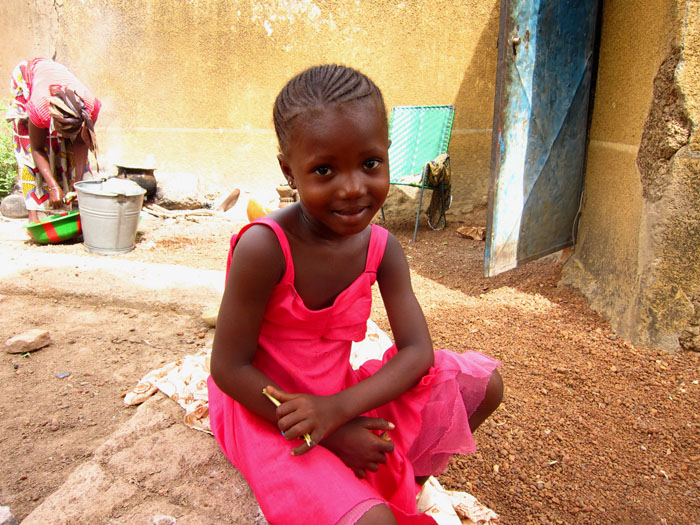
Meet Ms. Mali 2020
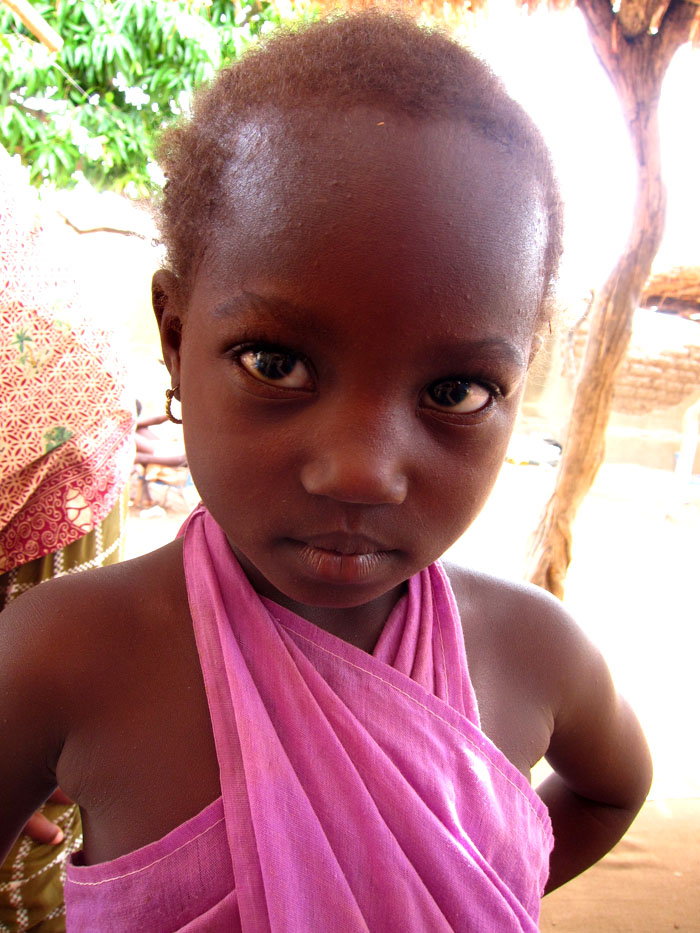
Meet Ms. Mali 2023
After camel drawing, tea drinking, mango eating and card playing, it was time for the evening's main event:
Settlers of Catan. These were first timers, but they were quick to catch on. Pierre in particular was quick to assert himself, taking advantage of numerous lopsided trades. He would end up winning the game. Notice the pig sauntering past at one point. Unfortunately, Bintou's family does not raise sheep.
One of the more entertaining games of Catan I've ever played.
Then, night.
There are a number of wishes that are offered in Bambara before sleep. My favorite is k'an kelen kelen wuli. It means "may we wake up one by one." Why one by one? Because if everyone woke up at the same time, there is a good chance something has gone wrong. A fire, for example. If we wake up one by one, we most likely spent the night in peace.
My bed was in the courtyard. Dogs, chickens, and pigs said hello at various points in the night. So did a thunderstorm. It tore off the mosquito net, blasted my face with sand, and soaked me in a single second. I moved my mattress into the house. Rain on a tin roof is four dimensional white noise. There is nothing like it. Four dimensional white noise, it turns out, is a good lullaby.
If you enjoyed this post, consider sharing it with the buttons below or subscribing to the blog by RSS or Email Thanks for reading 🙂
Source: https://philintheblank.net/2011/06/09/teaching-a-malian-village-of-25000-people-how-to-draw-camels/
0 Response to "Africa Drawing Someone on a Camel Easy"
Post a Comment